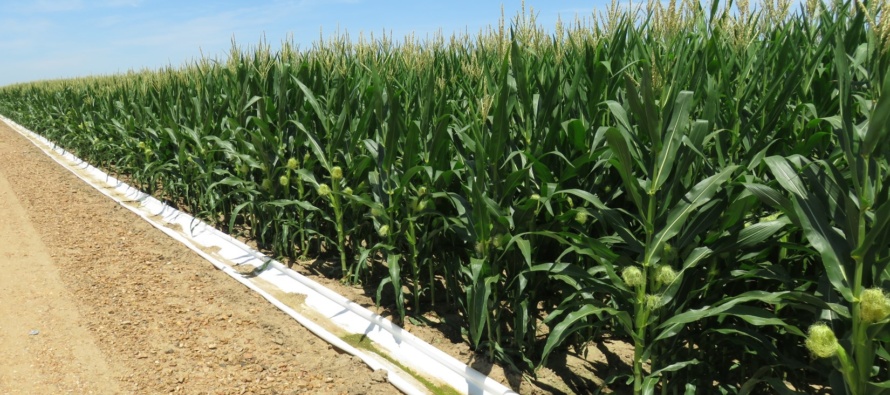Corn irrigation initiation and strategies for 2025

Related Articles
- 2010 Soybean And Corn Variety Trial Data 3
- Spring Nitrogen Fertility Suggestions for Wheat 0
- 2010 Row Crop Short Course Video Links 0
Latest Tweets
Abundant rainfall has considerably delayed when we typically begin irrigating corn in the Midsouth. However, it will likely dry enough for us to make the decision to commence irrigation soon, if we haven’t already. However, most corn is now entered or near reproductive development, rather than late vegetative stages, when we usually start irrigating. Thus, corn physiological development and needs will likely be different when irrigation commences, or is necessary, this year. This should affect our irrigation management.
Since corn’s water demand and sensitivity to stress are highest at tassel and early reproductive stages, we should now implement a liberal irrigation strategy, compared to the more conservative approach we promote during vegetative stages. However, since abundant rainfall has blessed us with plentiful soil moisture, these reserves will help alleviate short term needs. Saturated soils have also impeded root growth, so thoroughly checking soil moisture and moderating irrigation intervals remain vital to developing roots, utilizing resources and improving plant health. Consequently, irrigating too early and often can still have negative consequences, including hindering root growth and reducing yield. Historical soil moisture sensor data confirm these findings and show root activity progressing 36-inches deep or more in highly productive Mississippi corn fields. Current soil sensor data show corn fields just beginning to develop roots and tap into moisture deeper than 20 inches this week. In summary, premature or excessive irrigation/rainfall will ultimately limit corn yield, so proceed cautiously.

Corn water use and sensitivity to deficit are highest during early reproductive stages. Accordingly, corn irrigation needs are high during this time.
The primary factor we should use to trigger corn irrigation is when soil moisture becomes limiting. It is normal to see corn leaves start rolling or wilting the first week or more we go without rain and temperatures climb into the 90’s, despite plentiful moisture in the soil. Thus, leaf wilt is a poor or unreliable indicator of genuine drought stress in our environment. Accordingly, the key factor to determine crop needs is to make a conscientious effort to evaluate soil moisture throughout the root zone. We should evaluate soil moisture availability using simple traditional tools, such as a shovel, probe or auger, or state-of-the-art soil moisture sensors to determine whether the crop needs irrigation and will respond in a manner that will ultimately enhance crop productivity. It is very important to allow plants an opportunity to tap into subsoil moisture and encourage root development which will enhance plant health and productivity.
Keep in mind that the highest irrigated corn yields in the world are traditionally produced in areas with annual rainfall about half or less of our normal. This shows corn is better suited to a lot drier conditions than what we are accustomed to. In fact, a farmer and former world record holder for corn yield stressed his yields would suffer if seasonal rainfall exceeded 30 inches. Accordingly, we should recognize there are negative effects associated with overabundant moisture and manage accordingly. After all, we commonly grow our row crops on raised beds to help relieve issues with overabundant moisture.




Great article. The corn crop looks tremendous but I’m afraid we will have a very good crop, not a great crop.